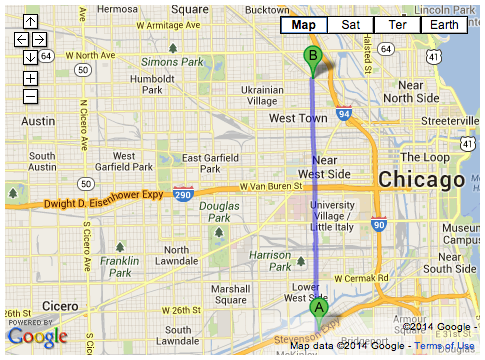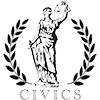| « Are Madigan-Linked Charter Schools Fueling Turkey's Corruption Scandal? | Will the Term Limits Amendment Get Bruce Rauner Elected Governor? » |
Public Transportation Thu Jan 02 2014
Supporters Speak Out on Proposed Ashland Bus Rapid Transit
Note from the author: This post discusses supporting views of the proposed Ashland Avenue Bus Rapid Transit (BRT) system and is a follow-up to a recent Mechanics post highlighting critical opinions of the BRT project.

Rendering of Ashland BRT/ CTA
The Ashland Avenue Bus Rapid Transit (BRT) project proposed by city transportation officials is decidedly a contentious issue. And while there has been vocal opposition to the project, there is also a plenty vocal segment of Chicagoans who support the Ashland BRT project.
Supporters say the bus modernization project would enhance transit and pedestrian conditions, connect city neighborhoods and increase economic opportunities for businesses along the Ashland corridor. The BRT is an important and necessary addition to Chicago's transit grid that would improve travel times, reliability and safety for Ashland transit riders, supporters say.
The Ashland BRT system would be an express bus system running down the center of Ashland Avenue for 16 miles between Irving and 95th Street. The BRT buses would have limited stops and traffic signal priority to keep them moving quickly. This means vehicles would be prohibited from making left-turns off Ashland at many intersections and from crossing Ashland at many side streets.
Two auto travel lanes, one in each direction would be designated as center-running bus only lanes. This would leave one remaining auto travel lane and one parking lane in each direction on Ashland.
According to city transportation officials, the BRT system would be twice as fast as existing Ashland buses. With speeds projected at 16 mph, the Ashland BRT would be nearly as fast as average El train speeds at 20 mph.
Transportation officials say Ashland was chosen for the BRT because it has the highest annual bus ridership in the city, with over 10 million boarding's in 2012. This is a necessary overhaul that would meet a high demand, they say.
Additionally, Ashland connects with numerous major destinations and existing train lines, officials say, making it an ideal corridor for the BRT.
Supporters say the BRT system, which is estimated to cost around $160 million, is a good investment that would make the most of already existing infrastructure to overhaul bus transit on Ashland.
SO WHO WOULD BENEFIT FROM THE ASHLAND BRT?
Local organizations like Active Transportation Alliance and Metropolitan Planning Council say a lot of people would benefit from the bus modernization project.
The Metropolitan Planning Council (MPC) is a nonprofit organization dedicated to increasing sustainability and prosperity in the Chicagoland region. The organization says current Ashland bus transit is outdated and in need of modernization. MPC supports the Ashland BRT system because it would contribute to a more effective city transportation network, it says.
"Chicago's rapid transit network was built with the assumption that most travelers needed to go downtown, leading to our hub-and-spoke system of rail lines that converge on the Loop," MPC said in a statement. "Over 10 million people travel by bus each year on the north-south Ashland corridor - more than some CTA rail lines - but they must endure delays and unreliable service."
Active Transportation Alliance is a nonprofit organization working to improve biking, walking and transit conditions in the Chicago area. The organization supports the BRT project because it prioritizes transit and pedestrian conditions.
"Converting the center lanes on Ashland Ave. to bus-only lanes and adding full-service transit stations and high-tech traffic signals is a smarter way to move people and better balance the needs of everyone who uses our streets," the organization said in a statement.
Active Transportation Alliance says over 2,000 people have joined its campaign to make the Ashland BRT proposal a reality.
Phillip Hutchinson lives and works along Ashland and supports the BRT project. He regularly commutes to his office on the Ashland #9 bus and said the BRT would benefit many people who commute by bus along that corridor.
"I think Ashland, in particular, is a good corridor for bus rapid transit because there's not a north-south train line in that area," Hutchinson said. "A higher speed bus system through there would be a good solution, as opposed to putting in a train line."
Chicago's transit system needs improvement, Hutchinson said. The Ashland BRT would improve bus commutes and would also be an important link between neighborhoods, he said.
"It would connect neighborhoods like Lincoln Square and Bucktown and further south towards the United Center," Hutchinson said. "That's an area that doesn't have a lot of public transportation options now."
Larissa Burke also lives and works off Ashland. She frequently commutes to her job at University of Illinois at Chicago on the Ashland bus and is a big supporter of the BRT project.
"The bus is really slow," Burke said in an interview. "UIC is right along Ashland, so the BRT would be really good for people who work and study here."
Many of her coworkers who take the Ashland bus to work also support the BRT project, she said. A lot of people at the university are socially active on environmental issues as well, she said, so they're pleased to see the city invest in cleaner transportation options.
Burke also pointed out that the BRT would make a big difference for lower income people without cars who rely on public transportation to commute along Ashland.
"It's good that they're doing something that would, in particular, help disadvantaged people," she said.
Burke and Hutchinson both acknowledged that some people don't support the BRT project, but they see the benefits outweighing the negatives.
"I think this project will benefit the greater good," Burke said.
Hutchinson said he understands Ashland is an important route for motorists. However, there are additional north-south corridors, like nearby Western Avenue, which would still be conserved for cars, he said.
"It's always a balance between motorists and people interested in public transit, and finding that balance is important," Hutchinson said. "I think the BRT is a good balance and a good use of space."













John Greenfield / January 2, 2014 12:47 PM
Thanks for showing the other side of the coin after that previous article featuring wall-to-wall negativity about BRT. Sure, there are fewer proponents quoted here than opponents in the last piece, but that's understandable, since the 2,500-plus people who've signed on as BRT supporters aren't as conspicuous as the noisy NIMBYs who've gotten most of the mainstream media attention so far. I look forward to additional, balanced coverage of the issue from GB in the future.